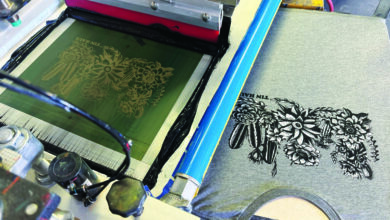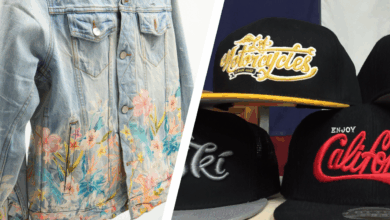Pandemic Q&A with Fruit Activewear’s Ricardo Aranda
Ricardo Aranda shares the company's focus and lessons over the last year

Around this time last year, businesses were facing disruptions and, in many cases, full closures due to COVID-19. Now, one year into the pandemic, we’re catching up with companies to get their thoughts on the last 12 months and outlooks on what’s to come.
For this installment, we chatted with Ricardo Aranda, VP of marketing and design, Activewear Brands, JERZEES, Russell Athletic, and Fruit of the Loom (pictured right).
Q: When the chatter was just starting around COVID-19, did you believe your business would be directly affected in any way? What were your first thoughts and implementations during that February/March time frame?
It’s hard to think it was over a year ago, but you can imagine many didn’t know what they didn’t know. New information was coming in daily, so we had to be nimble and adapt quickly to what we were learning and how the business was shifting. During that time, we began having reasons to believe that large events would change so it would have a direct impact on sports, schools, and social events like concerts, festivals, and such, so our business would have to evolve. In the early stages, we began implementing some business shifts in planning and inventory, redirecting marketing resources to the most promising investments, and working hand in hand with our customers to ensure we were able to react to our shared service standards.
Q: How did those initial thoughts compare to Fruit’s experiences over the last year?
The market in 2020 was unprecedented, but for a company that’s been around over 160 years and with a global footprint, we’ve seen the highs and lows of apparel manufacturing and have learned to react to the shifts in market demands. However, remaining focused on core styles like our JERZEES NuBlend Fleece, pursuing new businesses like producing reusable cotton face masks, redirecting and prioritizing marketing resources, and reacting to our customer service needs was our focus.
Q: What actions has the company taken over the last year concerning operations, interacting with customers, philanthropy, etc.?
We’ve had to plan closer and react quicker to shifting needs; the growth in comfort clothing like fleece pants and shorts saw us take important forecasting, planning, and developing action on those styles. The acceleration in eCommerce drove resource reallocation to respond to the rise in sales. Our relationship with customers got stronger, and we learned how to navigate through the change together. Interactions became more virtual, conversations became more frequent, and our partnerships came out stronger. While we had daily conversations in response to the ever-changing landscape, we also planned for the future and foreseeing a recovery in the months ahead.
From a philanthropic standpoint, we knew it was important to stay true to our corporate values and continue to support our surrounding communities, give back programs, donations, and partnerships focused on helping those most in need, like Russell Athletic’s partnership with frontline workers, black communities, and the Skate Board community by donating Dri-Power Fleece Crews to top skate shops across the U.S. on the 2nd Annual Skate Shop Day this past February.
Q: Between then and now, how much have things changed?
There’s been (a) shift in categories with (an) increase in work from home clothing and a casualization of the workplace, while categories dependent on big events have suffered. Our channel mix is shifting as we continue to see rapid acceleration on eCommerce on our own channels and our strongest retailers. Our mass and retail business and our customers who service those remains strong and healthy.
We’ve seen a strong return to quality products as consumers shift their purchases to relevant and trusted brands. Our data, tools, and knowledge of the business has increased dramatically as we keep a better pulse on the shifting market demands. Our planning and manufacturing is becoming more flexible and responsive to our customer’s needs. And lastly, we have a heightened urgency on service and working closely with our customers to support their operations in a timely manner.
Q: What has the business learned over the last year?
Change will be inevitable, and the apparel category is ever-evolving. The dynamics of 2020 have accelerated some of those changes in comfort categories and customer mix, so becoming a faster organization will be key to responding to change going forward. In 2021, service will be king. Being side by side with our customers as we foresee recovery will be critical.
Q: How do you see the next six months to a year going, both for your company and the industry as a whole?
We’re already seeing growth and recovery in key categories like fleece and comfort clothing and an appetite for newness and fashionable styles. We’re optimistic that within the next six months, the market and industry will recover but possibly not to the levels or growth rates it was experiencing pre-COVID. Time will tell how quickly society returns to a new normal safely, where events, sports, schools, and office work finds its path forward. Our job will be to be there for our customers and consumers and adapt our business model in response to their needs.



